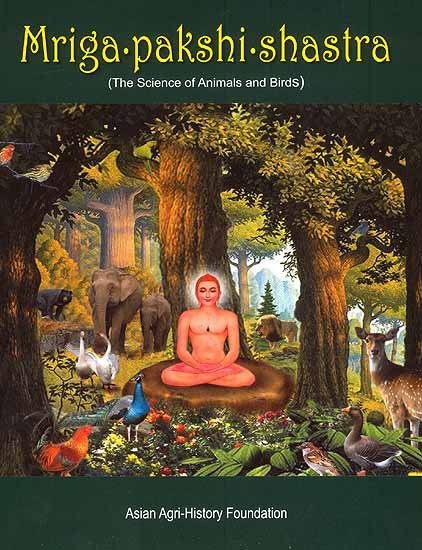Animal Kingdom (Tiryak) in Epics
by Saranya P.S | 2019 | 51,616 words | ISBN-10: 8190396315 | ISBN-13: 9788190396318
An English study the Animal Kingdom (Tiryak) in Epics.—The present thesis is based entirely on Ramayana and Mahabharata although an attempt is made to analytically compare the Animal kingdom with Mriga-pakshi-shastra—‘The ancient Indian science of of Animals and Birds’....
Chapter 4.35 - The Uluka (Owl) in the Epics
Ashvathama’s attack on Pandavas at night. He saw owls attacking the crows at night. (This might be from the fifth book of Pancatantra.) Uluka (owl) was the name of the emissary sent by Duryodhana to tell the Pandavas that their peace proposal was rejected.
Ulukas live in forests and on trees in public and private gardens. They have big and long eyes and fat bodies. They have big heads, small wings, and their bodies have different colours. Early winter is their mating time. The young ones are nurtured by their mother. There are different varieties of them.[1]
One variety is called Brown Fish Owl (uluka). They have black and red body colour. The colour of the corner of their eyes is yellow. They have small wings and are soft to touch. They are tall and fattish. They live on trees. They are cowardly by nature. They live flocks and subsist on worms and insects. They also eat flesh. They are friendly to other birds. They are scared of extreme cold and rain. They are fond of sporting in water. People believe that their hooting forebodes evil.
The 2ndvariety is called Vayasarati (Barn Owl). It means enemy of rooks. They are born enemies of rooks. They are tall and instilfear in other small birds of the forest. Their bodies are dotted with blue, black, white or red dots. Their distinguishing characteristics are long neck, long nose and a very cruel nature. They are strong but they are slow. They fight with other birds in the flock. They have sharp beaks. They are flesh eaters. They go on shaking their wings.
The 3rd variety is called Pecaka (Great Horned Owl). They are small in size. They look attractive with white colour on the edges of their wings. They are usually of a smoky colour and they have yellow eyes. They have fat bellies, bulky bodies, and slow gait. They are calm and cowardly. Their cry is believed to portend some auspicious events. They are kind to other birds and like to reside in shady places. They are believed to bring prosperity to their masters.
The 4th variety is Kaushika (Hoot Owl). Four types of Kaushikas are known to reside in the forest. Their body colours are black, reddish black, and smoky. Their call is believed to portend evil for humans. They are cruel and indulge in cruel activities. They are mostly blind during the day and can see well only at night. Their hooting 'ghu -ghu' creates fear in the minds of those who hear it. They achieve maturity when they are 2 years old. Their mating time is late winter.
One variety is Kaushaka is Collared Scops Owl. They are tall, smoky in colour and have speedy gait. They have big eyes but can't see during the day time. Even in the night they stay in darkness. They normally stay alone and are hostile to other birds. Their call is frightening to people. They eat dead bodies.
Another variety is Ghuka (Barred Jungle Owlet). In the night they descend from their lurking places and create fear in humans. They have short bodies and short legs, long mouth, black wings, and smoky colour. The hair on their body is very rough. They fly fast in the night. They are bad tempered. Their bodies smell badly.
Another variety is Divabhita (Pallid Scops Owl). Divabhita means scared of daylight. They are very tall. They have fat limbs and their colour is like that of a donkey. They have long wings and amazing speed. They are wicked by nature and kill animals and birds. They fly very high in the sky. They relish foul-smelling food. Their cries pierce the ears of those who hear them.
Another variety is called Nishatana (Spotted Owlet). It means night wanderers. They have small bodies and different spots on their bodies. They have long beaks and short tails. Their feet are small, nails sharp, bodies fat and they frequently hoot. They are fond of flesh, especially stinking bodies. They roam from tree to tree fighting with all the smaller birds they see. They seem to enjoy harming others. They are scared of the rainy season. They are beyond any kind of training. Their life span is five years.
